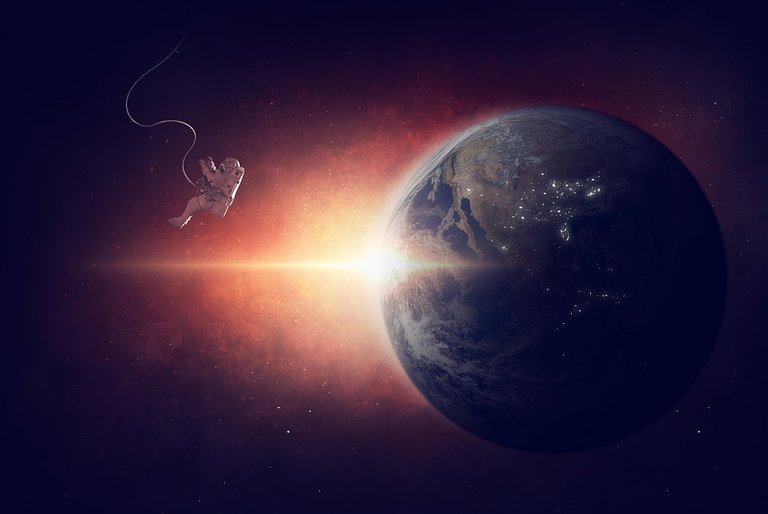In the previous episode, I explained the Rotating Bucket experiment and how it supports Substantivalist views. In this episode, I will explain the nature of Space from a Relationist point of view and the Substantivalist’s corresponding arguments.

Relationism: The Leibniz Shift Argument
Leibniz, a great Philosopher and a firm believer in God, conducted his own thought experiment to counteract Substantivalism in attempt to disprove it. He coined this ideology ‘The Leibniz Shift Argument’ which uses his belief in a creator against Newton.

What is it?
Let’s assume we have a Universe in position X; to the Substantivalist, the definitive position of the Universe is position X. Leibniz argued that if God was the creator of the Universe, why would he choose to create this Universe on position X and not on position Y, where Y is shifted by a few metres to the right, from X? Considering the Universe placed on X is entirely identical to that shifted to Y, the Relationist would see no difference in the two Universes at all [1]. This is because the relations between all material bodies within these Universes are the exact same. To the Substantivalist, the shift from X to Y is a shift in Substantival Space, thus meaning that the two Universes are different.
How does this dispute Substantivalism?
Leibniz drew conclusions to counteract Substantivalism from two different concepts to do with this ideology; The Principle of Sufficient Reason ‘PSR’ and The Principle of Identity of Indiscernibles ‘PII’ [2]. However, as you will read in subsequent paragraphs, these concepts are incomplete in supporting Relationism, as all they do is attempt to invalidate substantivalism and such attempts are futile as they are somewhat feeble and incompetent.

The Principle of Sufficient Reason (PSR)
The Principle of Sufficient Reason is a simple argument that states everything must occur for a reason. As mentioned before, the shifted Universe Y is different than Universe X to a Substantivalist; therefore, if God were to create a Universe, it would be created with reason. Why would God choose to create a Universe one way over another, i.e. why would God favour Universe X over Universe Y? As a result, Newton’s definition of Space being a physical object becomes invalid in response to this argument [1]. However, as Leibniz uses religion to propose his idea, the Substantivalist could argue this argument as irrelevant since one needs to believe there is an omniscient creator that has sufficient reason to create a Universe to rationalise. Furthermore, to claim that everything happens for a reason can easily be disputed as one cannot know this for a fact. Consequently, the Substantivalist may ask why God needs a reason to create a Universe in the first place.
The Principle of Identity of Indiscernibles (PII)
The Principle of Identity of Indiscernibles states that if two objects are indiscernible, you cannot tell them apart using any form of observation or measurement; for example, two hydrogen atoms are indiscernible as you cannot distinguish between them. In other words, if you cannot tell two objects apart, then they are the same thing. Using this premise and Newton’s Static Shift theory, Leibniz, yet again, attempts to disprove Substantivalism. The Static Shift theory states that if everything within a Universe, such as Universe X, is positioned elsewhere, i.e. shifted in absolute space, such as Universe Y, everything within remains the same with no detectable change. It is clear to see that Newton’s theory contradicts his own Substantivalist beliefs, as to a Substantivalist, two identical Universes at positions X and Y in absolute space means they must be different in some way or another. There are no doubts that the Substantivalist must explain this conflict. The Substantivalist may argue that these two Universes at X and Y may very well be different due to some sort of unknown connection that we cannot measure. In other words, since we don’t even know if there is more than one Universe, how can we expect to measure a connection between it and another Universe?

Summary
As with the Rotating Bucket argument, the stand point of the Leibniz Shift from a Relationist perspective succeeds to pick another considerable hole in the Substantivalist’s point of view; but as previously discussed, these hypothetical arguments rely on prior beliefs and can easily be disputed by a Substantivalist explanation, as shown above. While the Leibniz Shift ideology sounds coherent and plausible, I conclude that one must have a firm belief in a creator to even begin to agree with it. Although the Substantivalist cannot put together a valid, concrete counterargument, one can agree that making conceivable sense out of the inconceivable is a difficult task indeed.
Overall Conclusion
The use of Philosophy and Physics to attempt to explain the nature of Space from both a Substantivalist and Relationist point of view, each have their pros and cons in giving a definitive solution. Even though the Relationist has a few compelling arguments that the Substantivalist cannot explain, Newton’s Rotating Bucket experiment gives physical, observable evidence for the Substantivalist ideology that the Relationist cannot explain without devising hypothetical and ‘physically impossible’ situations, such as a rotating bucket in an empty Universe. The Leibniz Shift argument works on the basis that the Universe was created by a rational creator who wouldn’t have created the Universe a specific way over another. Although Newton’s static shift theory and Leibniz’s Principle of Identity of Indiscernibles go hand in hand when they should not, again, Leibniz fails to physically show with direct observations that Newton has contradicted himself. Having seen the creation of ‘The Theory of Relativity’ and ‘Quantum Mechanics’ since the era of Newton and Leibniz, views on Substantivalism and Relationism may well have changed in the modern day, but in my opinion, Newton’s physical arguments carried the day in their time; however, perhaps taking these theories into account would give me a different standpoint.
If you have any questions, leave them below and until next time, take care.
~ Mystifact
References:
[1]: Sklar, L. 1992. Philosophy of Physics. United States of America: Westview Press.
[3]: http://images.slideplayer.com/16/5235889/slides/slide_13.jpg
[2]: http://www.maths.lse.ac.uk/Personal/james/York/lect12.pdf
Please note; no copyright infringement is intended. All images used have been labelled for re-use on Google Images. If any artist or designer has any issues with any of the content used in this article, please don’t hesitate to contact me to correct the issue.
Relevant articles:
Our Solar System, Our Home
Will Teleportation Ever Be Possible?
Can We Download Our Brains and Live FOREVER?
Previous articles:
The Philosophy of Physics: What is Space? – Episode 1
How to Turn a Traffic Light Green
Where Does Burnt Fat Go?
Follow me on: Facebook, Twitter and Instagram, and be sure to subscribe to my website!
Being A SteemStem Member
Interesting read! I would like to hear your thoughts on Dynamic gravity theory sometime!
I have added it to my ideas list. Thank you for the suggestion and hope you are around for when it does get released!
Very, very interesting text! I think that's Tesla views of space is one of the most interesting in history. I wrote about Tesla https://steemit.com/life/@srba/genius-who-lighted-our-minds-and-lives-nikola-s-tesla-favourite-song-played-on-his-funeral, but i plan to write about this field of his reserch!
I would be interested in reading that article once you write it :)
As a humanist person this subject matter always intrigues me ,as a way of making the brainwaves think a lot more about different things entirely. I will look out for your future posts .I would not mind hearing your opinion on The Multiverse theory /Quantum physics .The Shroedingers cat experiment or the double slit wave are very interesting work from way back in the day .
Of course! I will have a lot more Quantum Physics content lined up to be released in the future. Definitely keep a lookout and thank you for your comment!
All scientific theories begin with a hypothetical scenario, potentially one day what was once indiscernible will become discernible!
Until that day, there's something to be learnt from both theories.
What you take from it is up to you.